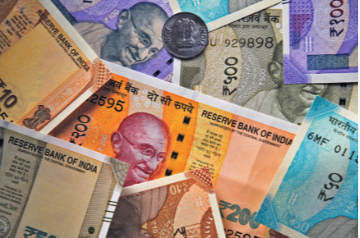 This piece is part of the series, India @75: Assessing Key Institutions of Indian Democracy.
This piece is part of the series, India @75: Assessing Key Institutions of Indian Democracy.
In recent years, the civil service in India has been subjected to growing censure. Political leaders, the media, academicians, the private sector, and
former bureaucrats have all expressed dissatisfaction with its current functioning. The most strident critics have called for its
abolition. While a few advocate its
radical re-engineering, still others would like it to fit the changing dynamics of modern India. While India celebrates its 75
thyear of independence, it may be worthwhile to attempt a dispassionate assessment of the civil service and its role in India’s future progress.
History at a glance
The roots of the civil service go back to the
Government of India Act 1858 which established the Indian Civil Service (ICS). The Act stipulated that all service appointments would be through a competitive examination. Kept at a maximum of 1,200, ICS officials were spread across 250 districts of India to oversee a population of 300 million. Over the years, the
imperial presence in India came to be best personified by the ICS.
To begin with, all ICS officers were British and recruited through an examination conducted in London. Later, circumstances compelled the British to admit Indians and also hold the examination in India. Up until World War I, the ICS untrammelled authority. The district collector, the cutting edge of the ICS, was charged with the primary functions of revenue collection and law and order. Later, more jobs got added. Three exercised decades down the line, a review of the service revealed several fault lines. The
Public Services Commission 1886 found officers often rose by seniority rather than by merit. The
Hobhouse Commission 1909 faulted officers for insufficient touring and inadequate knowledge of the local language and customs.
Soon after, two massive events hugely impacted the ICS. The first was World War I which disrupted British recruitment and forced the enhanced recruitment of Indians (
Lee Commission 1924). The second was the
Montagu-Chelmsford Reforms in 1919. It introduced a degree of popular control in provincial governments and local councils. With time, constitutional reforms got wider, culminating in the
Government of India Act 1935 which transferred full authority to provincial governments. Progressively, the cocooned service was thrown wide open, revealing the hitherto concealed shortfalls of the service.
Nehru exposed the myth of ICS competence and ICS officers, accustomed to stereotyped functioning, could not adapt to new changes.
The discomfort in dealing with politicians, the steep decline in emoluments and the emergence of lucrative private sector jobs in the West began dissuading British aspirants from joining the service. World War II worsened the distress as ICS officers got
drafted into the duties of civil defence, air raid precautions, food controls, and war recruitment. On top of it, the nationalist movement was gaining ground and officers had to contend with mounting dissidence. The cumulative effect was that by 1947, British recruitment to the
steel frame had almost completely
dried up and its crippling emaciation hastened the collapse of the British Raj.
Civil services in post-independence India: Strengths and challenges
Post India’s independence, the ICS was replaced by the Indian Administrative Service. This was not without debate, but Sardar Patel was vehement in his argument for its continuation. In his
address to the Constituent Assembly in 1949, he emphasised that there would be no united India without a good All-India Service.
In 1947, two centuries of imperialism left Indians in abject poverty and India had abysmal
social and economic indicators. The average life expectancy was below 40 years and the average per capita national income was INR. 265. Food security was a huge challenge and almost all consumer items had to be imported
. The literacy rate stood at 18.3 percent. The rail network carried only 4 million passengers daily. The country had 20,000 km of national highways and registered vehicles numbered 3 million.
Today, life expectancy in India is about 70 years; the average per capita income is INR 150,326, and most consumer items get locally made. Poverty stands substantially reduced. India now exports food grains. Milk, egg, and fish production have seen a massive jump. The literacy rate in India stands at 77.7 percent. Twenty-three million people travel daily using trains.
National highways have soared to 126,000 km and registered vehicles to 300 million. India has covered a long distance since its independence. It stands more connected, better fed and more educated. It is now a confident nation, rising in economic and military power. In much of what India has achieved, contributions have come from an array of different national stakeholders in diverse walks of life. The civil service is one of those stakeholders and the key orchestrator of these developmental efforts.
These contributions, however, do not hide the fact that the civil service seems to be faltering in satisfying the aspirations of a resurgent India. There is widespread criticism that the civil service is elitist, self-serving, slow, and painful. It operates under a flawed system of incentives and penalties and officers work without pressure to perform.
The role of the civil service in preserving and cementing Indian democracy has been no less. This is exemplified by a
2017 study that concluded that the civil service had been outstandingly effective in preserving national unity and constitutional rule. This is further illustrated in the exemplary manner in which free and fair elections are conducted in India by the Election Commission. Time and again, the country has turned to the civil service to man many of the most vital institutions of the country, such as the Reserve Bank of India and the Comptroller & Auditor General.
Its role in policy formulation has been equally significant. The
World Bank in its study found that wherever the civil service was empowered by political leadership, almost every single case of reform was led by a civil servant. This, it has done, by and large, in the best traditions of neutrality and without fear or favour. Additionally, the institution of the District Collector has
endured as one of the most trusted institutions in the country.
These contributions, however, do not hide the fact that the civil service seems to be faltering in satisfying the aspirations of a resurgent India. There is widespread criticism that the civil
service is elitist, self-serving, slow, and painful. It operates under a flawed
system of incentives and penalties and officers work without pressure to perform. The private sector finds the generalised civil service unsuited in a highly specialised world, fit to be replaced by a new
Indian Management Service. On top of it, there are doubts about its
standards of ethics and professional integrity.
Many of these criticisms have validity and there is little doubt that the civil service in India is ripe for radical reform.
Administrative Reforms Commissions, political scientists,
civil servants, and many others have made a whole host of suggestions that are in the public domain. These are in the areas of entry examination, recruitment, lateral entry, promotion and empanelment, appraisal system and weeding out the
inefficient.
The way ahead
Among the recent reforms attempted, the effort at lateral entry at the level of the joint secretary may be rated as a significant step. This level is widely regarded as the cutting edge of government, contributing to both policy-making as well as policy implementation. Lateral entry is aimed at getting the best from whichever source is available. It also targets the disruption of the
‘bureaucratic status quoist monoculture’ and the injection of a different management style, more adept at an out-of-the-box approach. Besides, the domain expertise of the expert synthesised with the
multi-sectoral wisdom of the civil service was likely to produce an improved output. However, from reports available, it appears that the very limited effort at
lateral entry may prove too feeble to overhaul the civil service. Given the very critical role played in national governance by the civil service, it is proper to expect that an internal exercise at the highest levels of the civil service would be undertaken regarding its performance. There are areas of the service that it could best fix. Standards about professionalism, neutrality and integrity, for instance, could be periodically reviewed. The service could come out with its annual publication, providing its assessment of governance in the country. These initiatives towards transparency and accountability have become a
sine qua non in modern public service.
One of the key causes of bureaucratic indifference, the reluctance to take decisions and lack of professionalism is an account of frequent transfers, whimsical postings and political pressure applied on civil servants in the process of decision-making.
However, any attempt at transformational governance restructuring has to be initiated by the political executive. This in the first place would call for
political discipline, including at the state level. Unfortunately, that does not seem to be forthcoming. One of the key causes of bureaucratic indifference, the reluctance to take decisions and lack of professionalism is an account of
frequent transfers, whimsical postings and political pressure applied on civil servants in the process of decision-making. Over decades, this has worsened, resulting in the demise of learning, and expertise and a fall in the levels of good governance. Such a political environment has left huge imprints on the working of the civil service.
Sardar Patel, arguing for the continuation of the All India Services had clearly
warned that the civil service can be only as good as the political executive is. In the kind of politics that currently prevails, especially in the states, all civil service reform will be stillborn until politics attain the desire to improve governance in the national interest.
The views expressed above belong to the author(s). ORF research and analyses now available on Telegram! Click here to access our curated content — blogs, longforms and interviews.



 This piece is part of the series,
This piece is part of the series,  PREV
PREV


